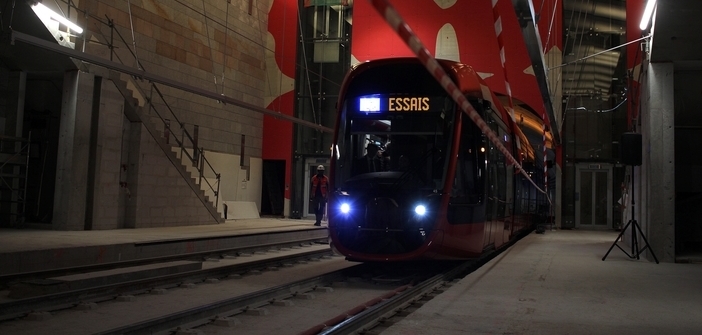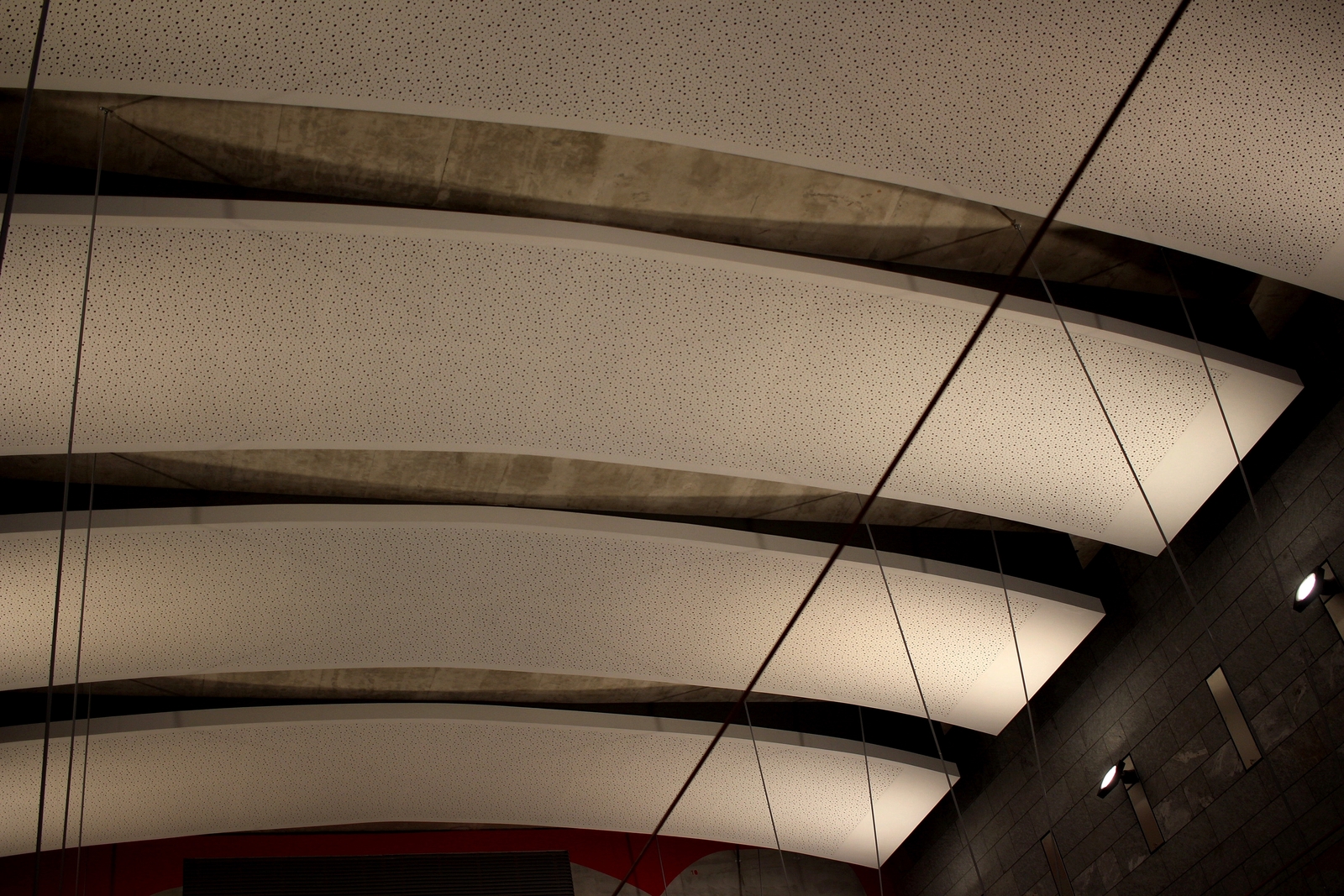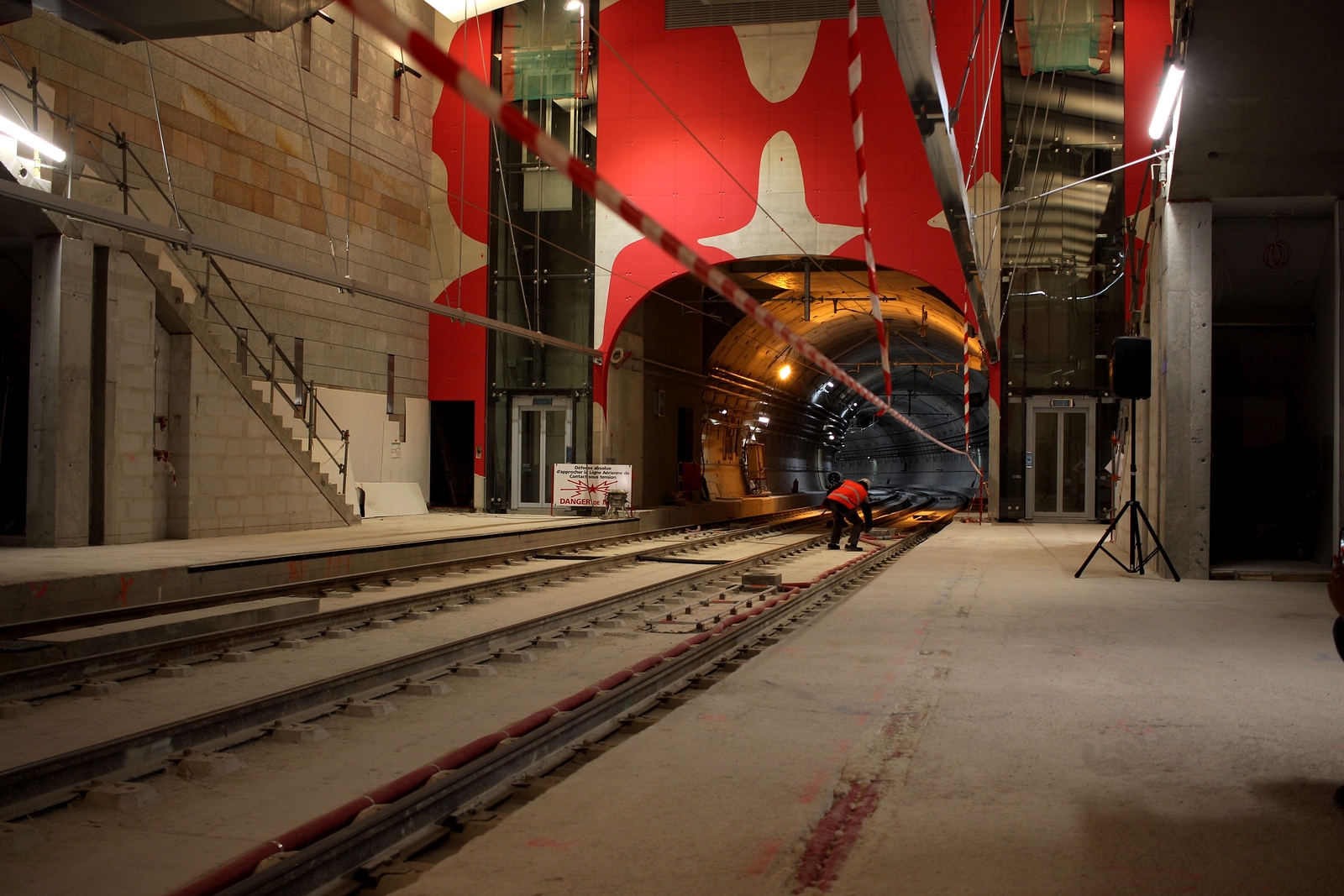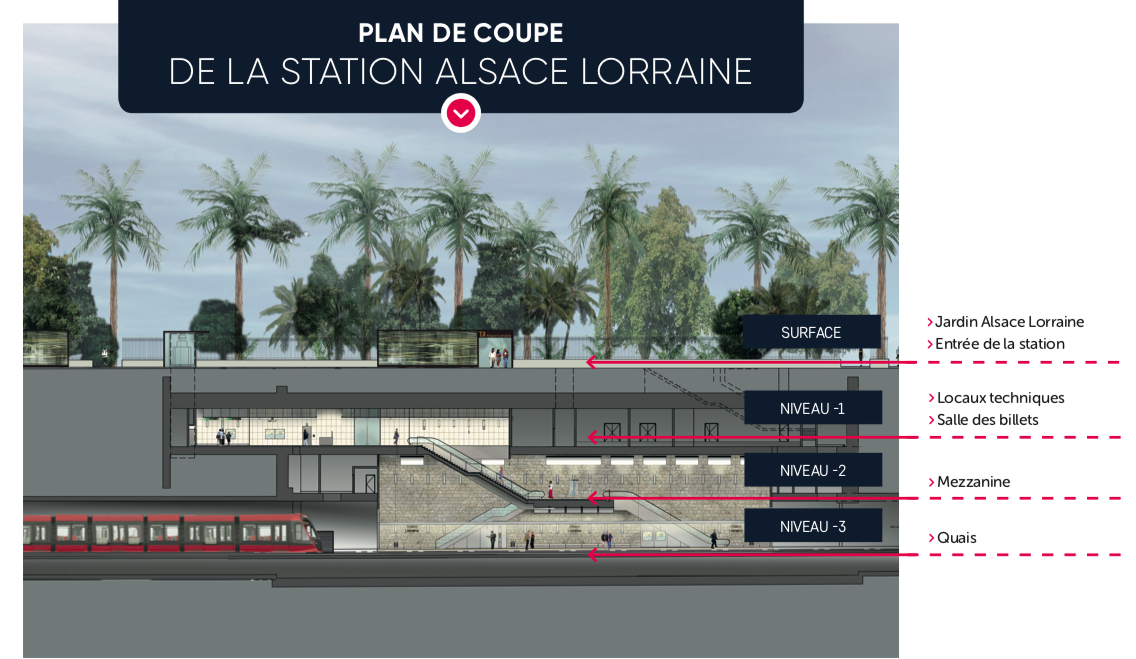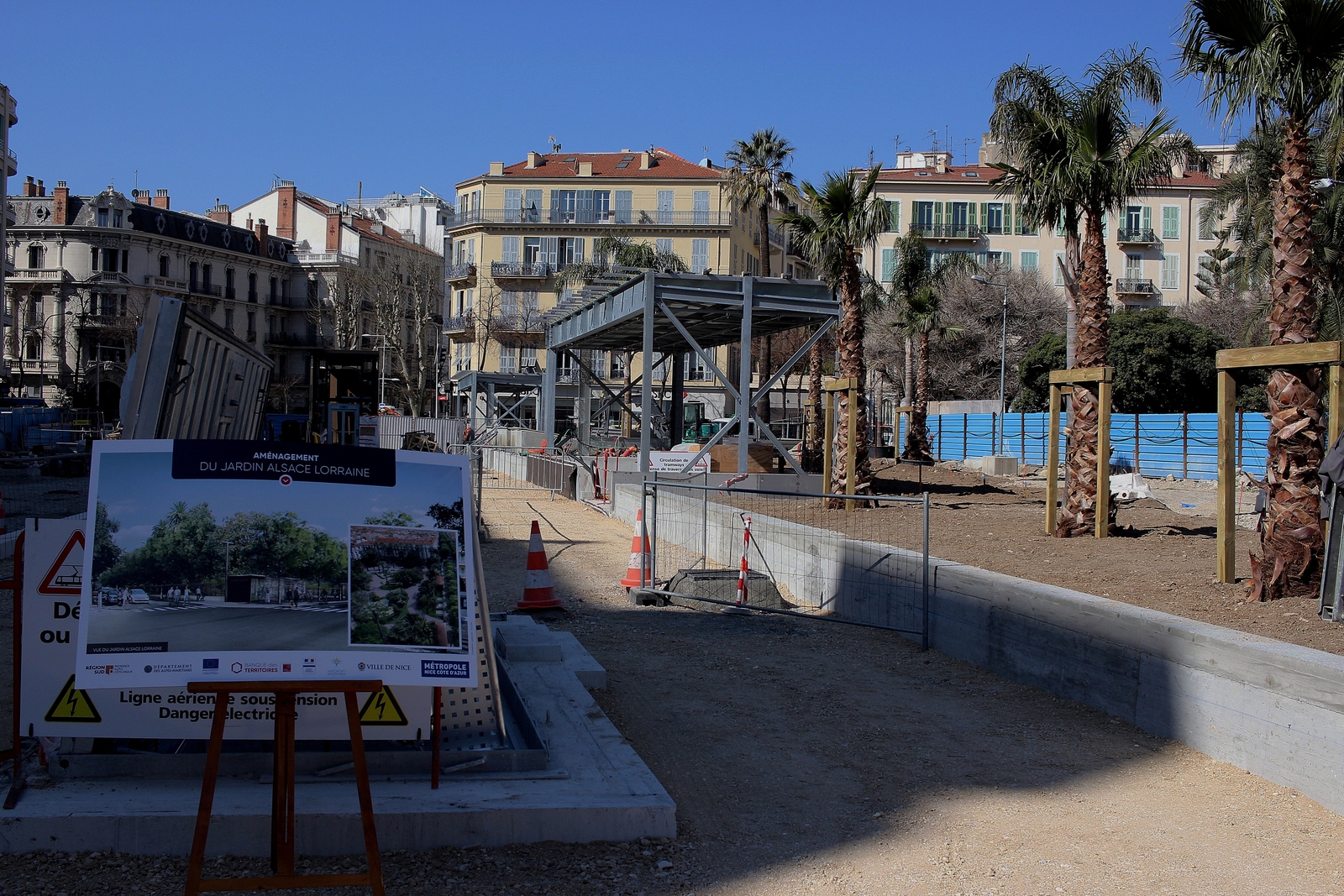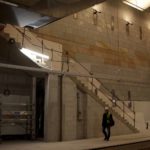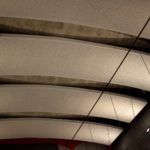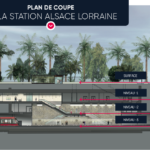In 1895, Louis Lumière filmed the arrival of a train at the Ciotat station. It marked the first steps of cinema. This Thursday, March 21, we witnessed the arrival of the first tram car into the Alsace Lorraine underground station, in the presence of Nice’s mayor, Christian Estrosi, and numerous officials.
The launch of the first trials of the tram car in the tunnel is part of the construction schedule soon coming to its end. In June 2019, if no delays occur by then, the “East-West” tramway line should be operational up to the Alsace Lorraine and Jean Médecin stations. The entire network will be active by the end of the year. In the meantime, we descended into the depths of the earth to discover what this famous underground station will look like.
From an architectural perspective, the four underground stations have been designed to be spacious, yet with the intention of not losing the user in space while maintaining comfortable and pleasant accessibility. The walls are covered with rather light luserna stone, while the floor is made of basalt, a much darker stone. The false ceiling is curved to improve acoustics.
Artist Jean-Charles Blais was responsible for decorating the Alsace Lorraine station, drawing inspiration from paper cutting. Along the walls, various red shapes are presented. The artwork adapts to its environment, allowing users to rearrange and reinterpret the shapes according to their perspectives.
Light shafts will illuminate part of this underground space organized into three distinct levels, as illustrated below:
At the surface, the Alsace Lorraine garden will retain its vegetation with minimal impact on the existing layout. Palm trees and various exotic flowers will be found.
